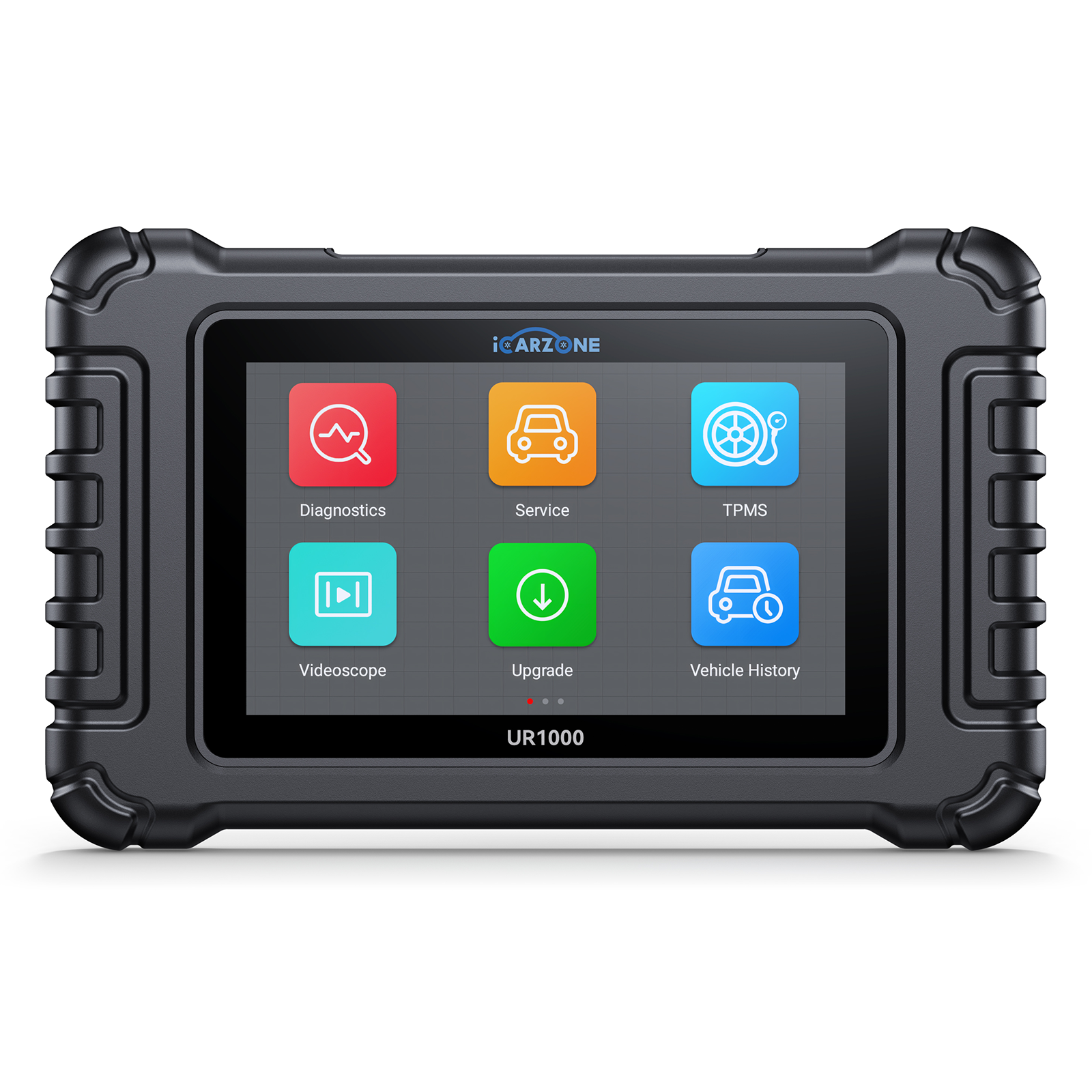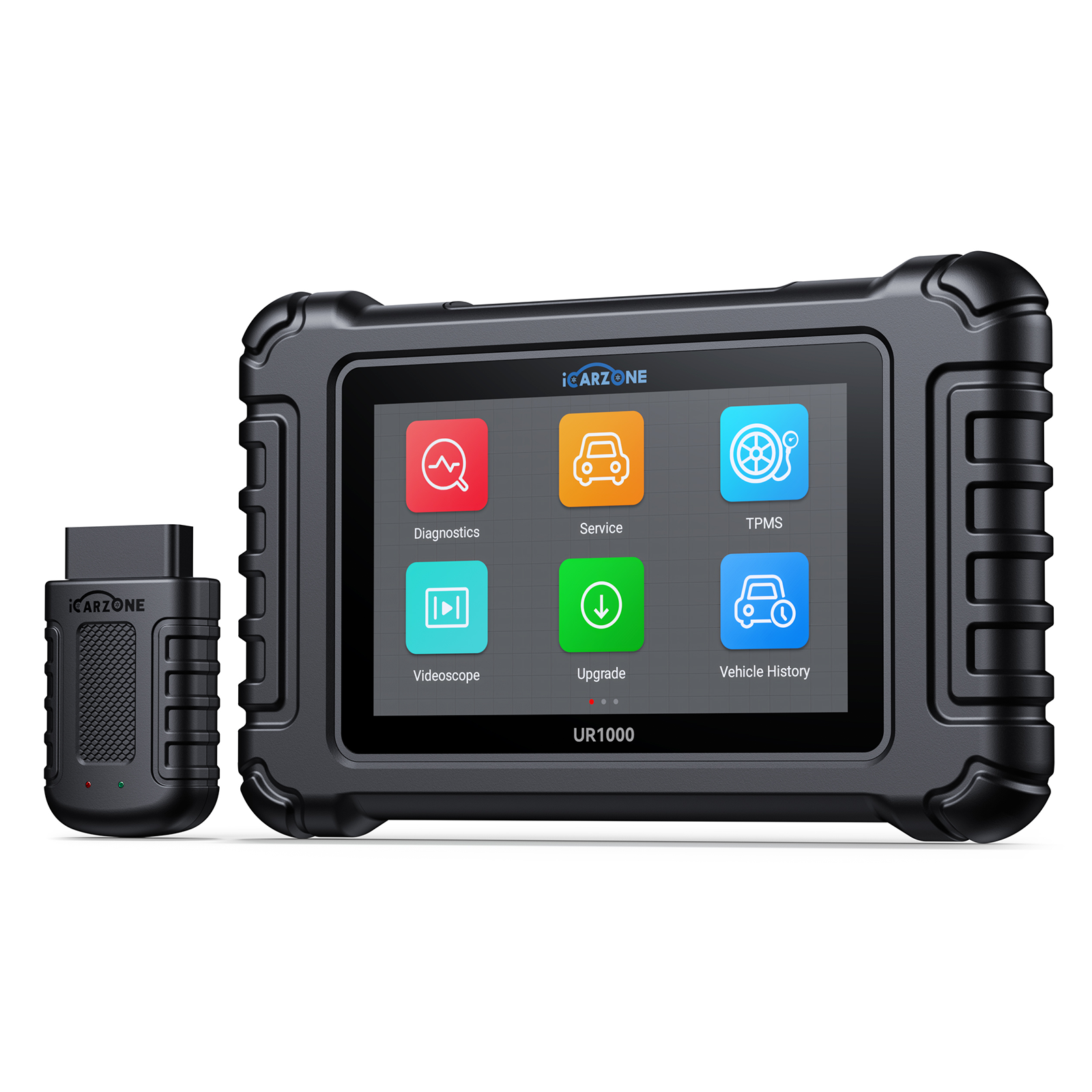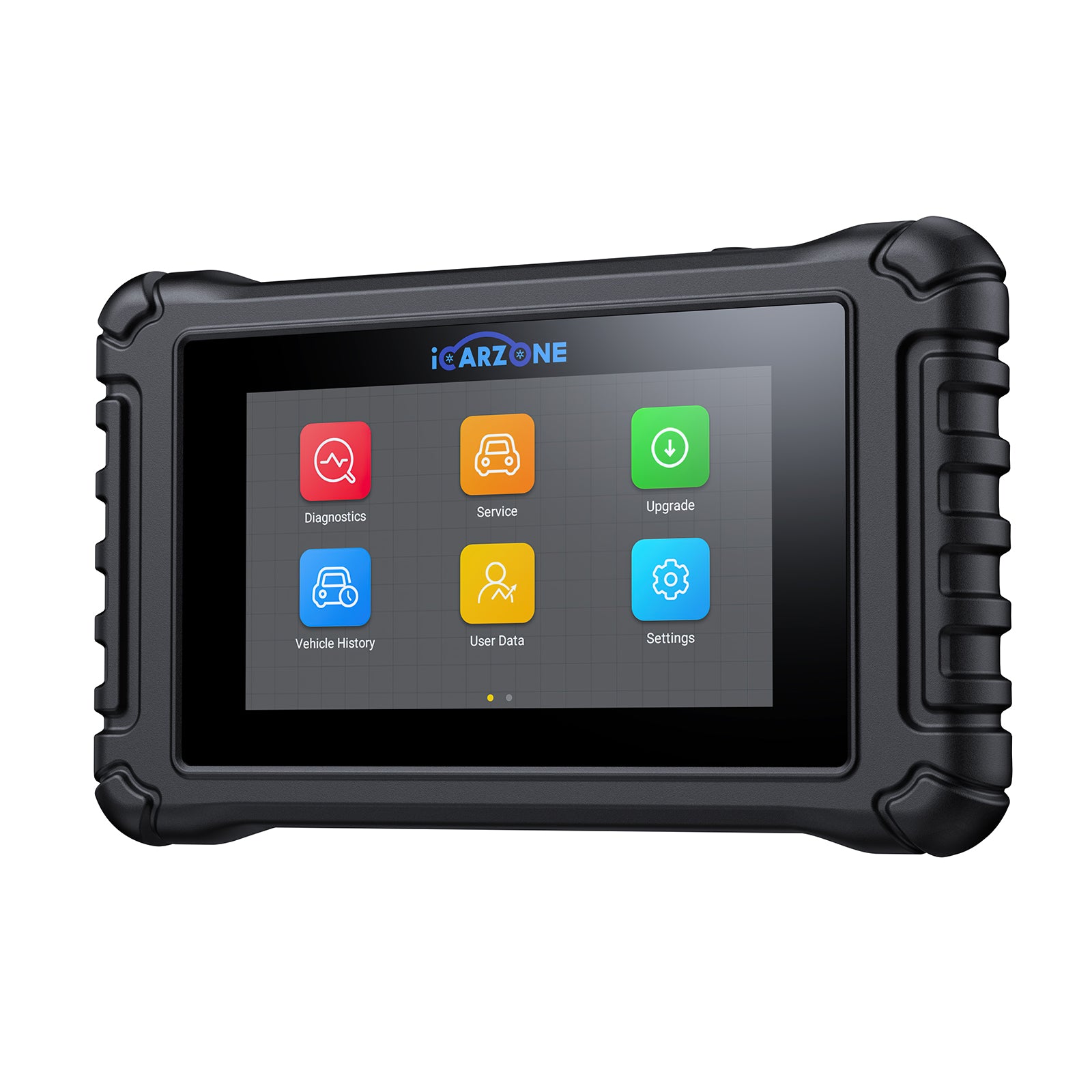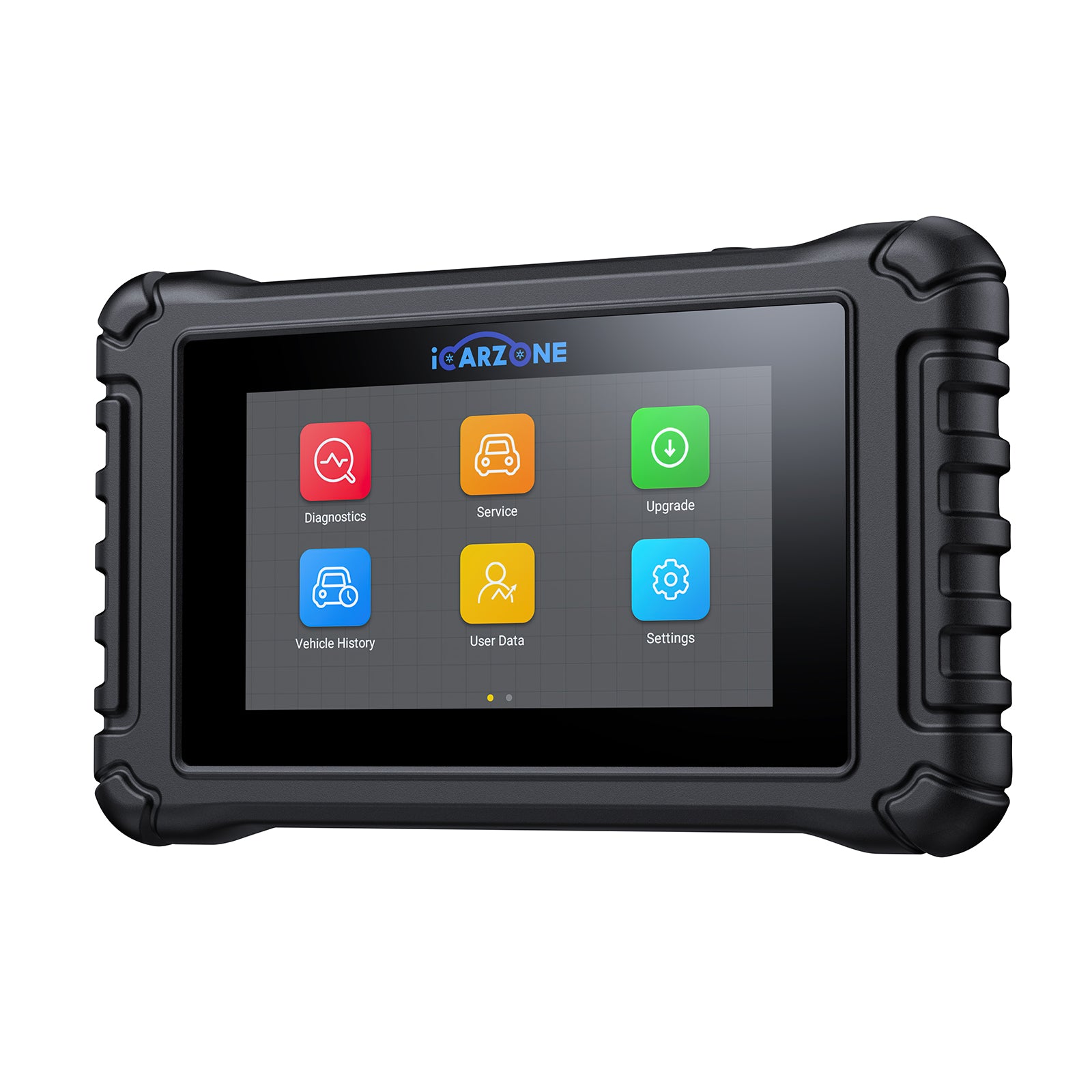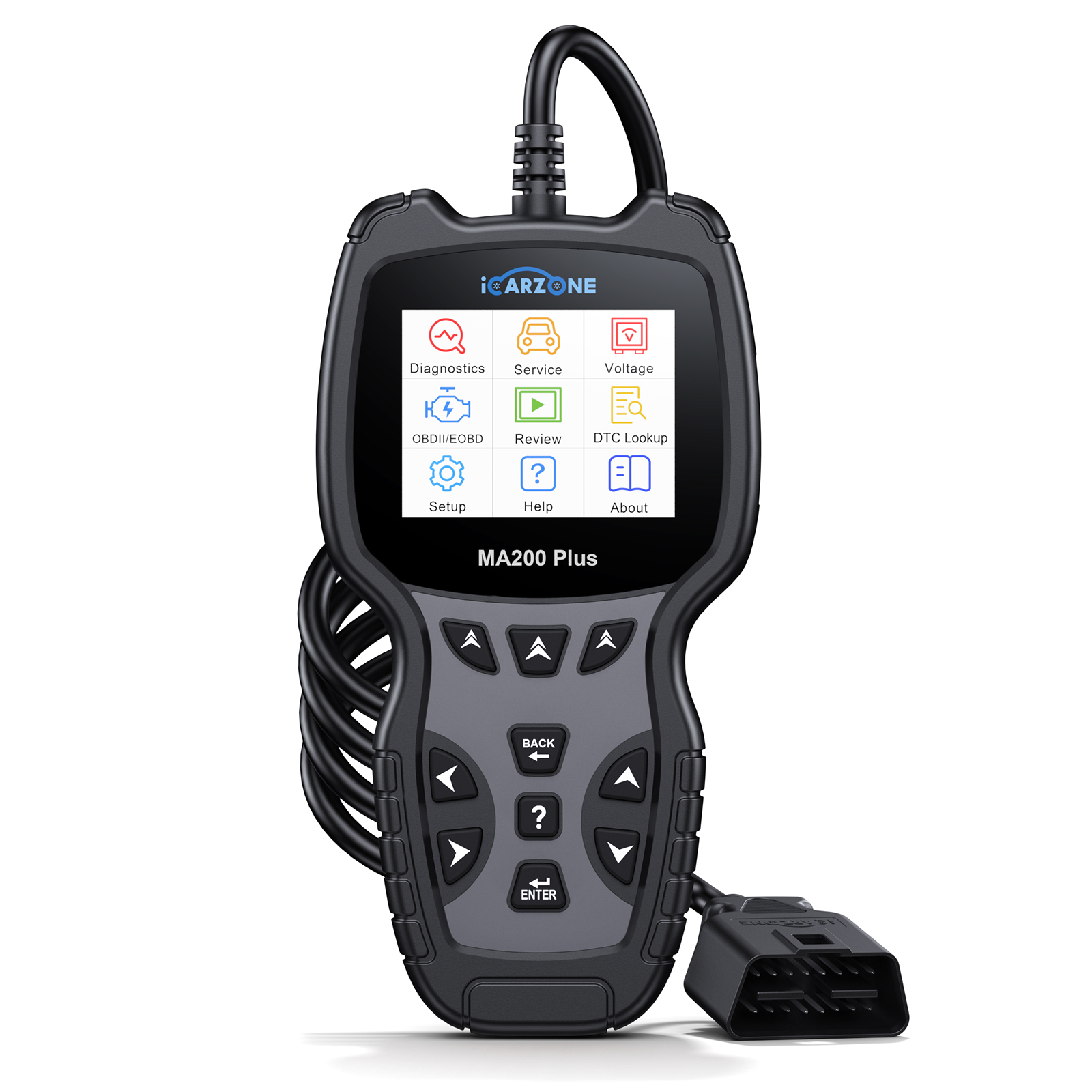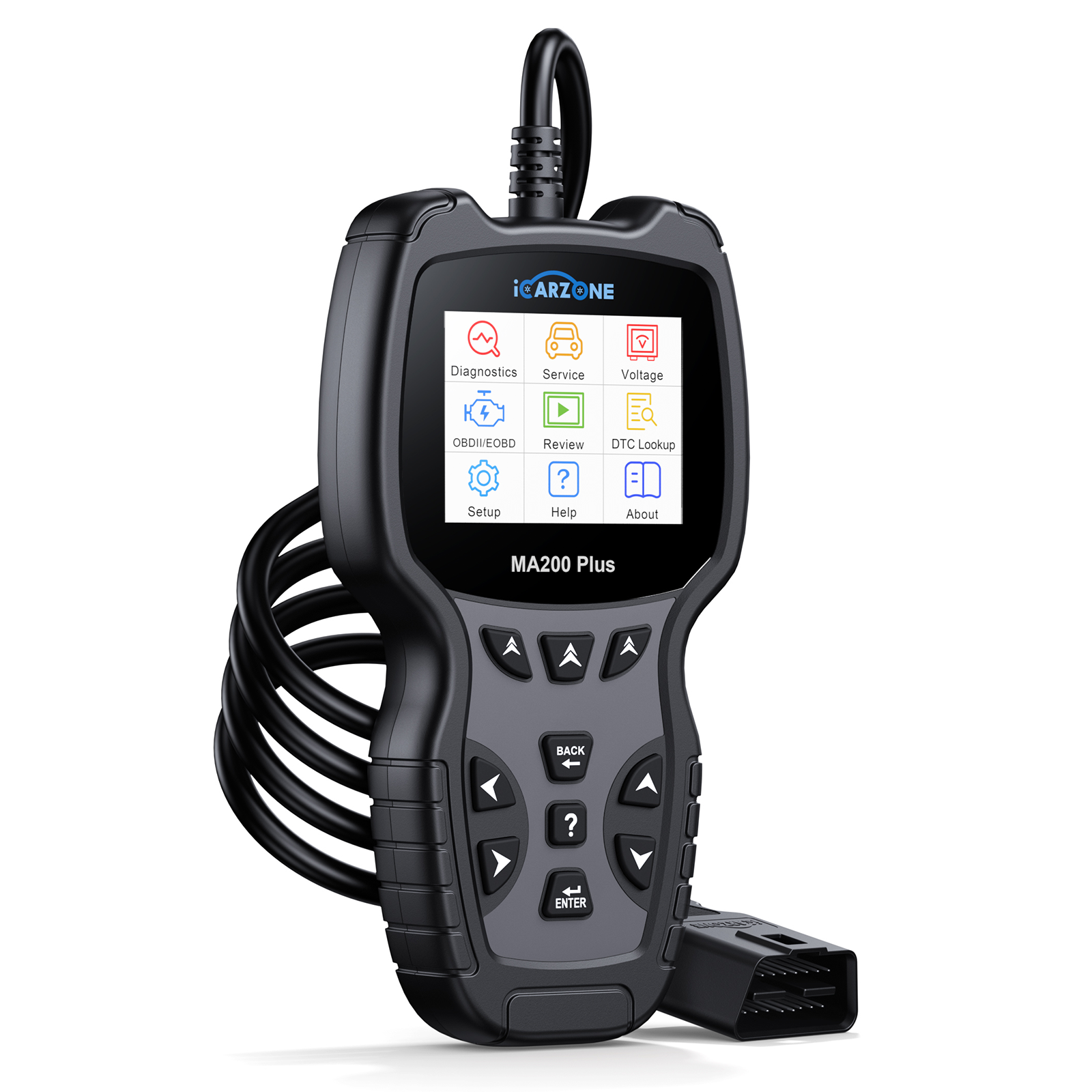P0366 Code: Fix Ford F-150 EcoBoost Cylinder 6 Camshaft Sensor Issue | iCarzone MA100
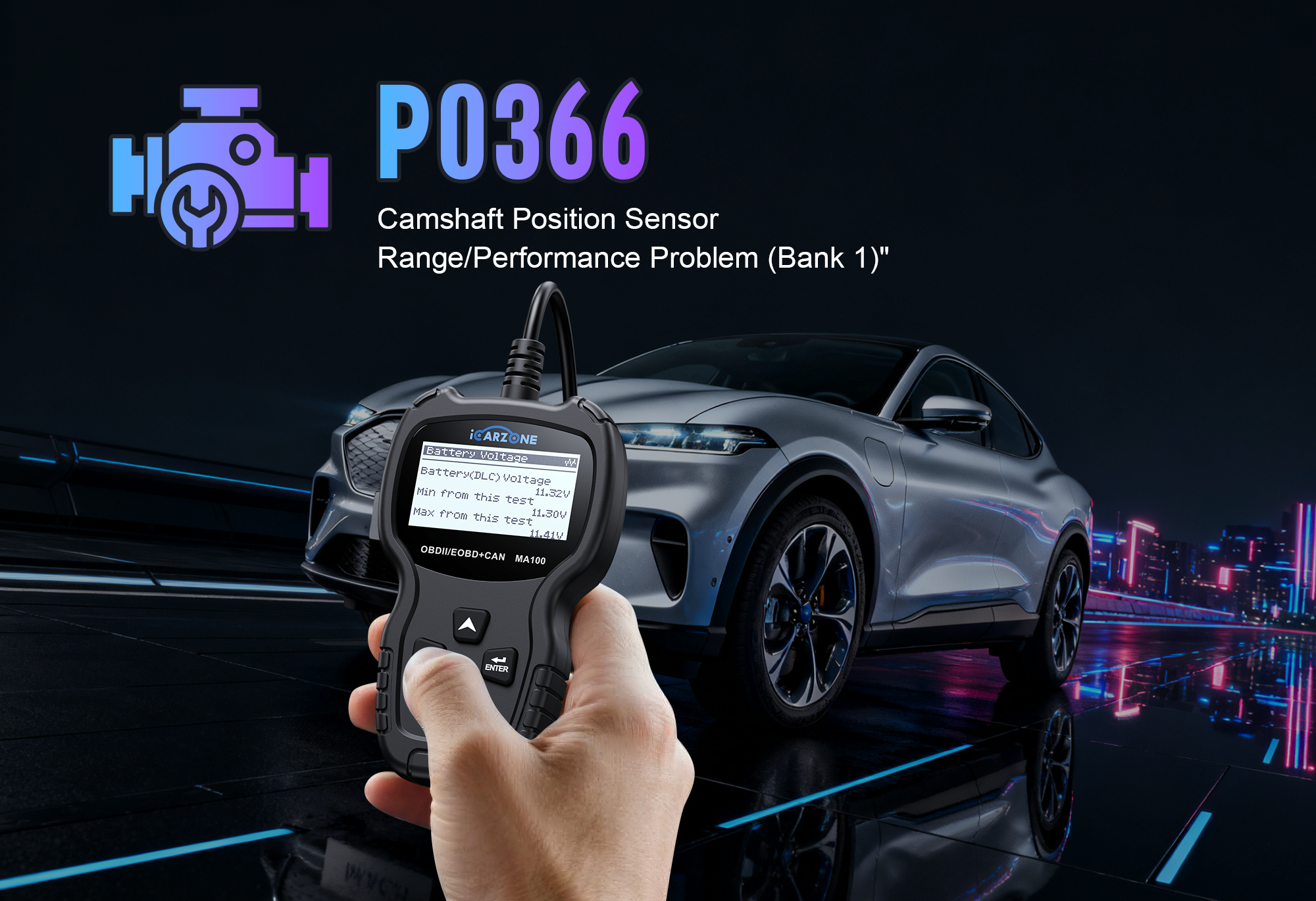
P0366: Cylinder 6 Exhaust Camshaft Position Sensor Circuit
Solve P0366 in Ford F-150 EcoBoost. Learn causes, symptoms, and fixes for this camshaft sensor error using the iCarzone MA100 diagnostic tool.
Get MA100 Diagnostic Tool1. What is P0366?
P0366 is a Diagnostic Trouble Code indicating a Cylinder 6 Exhaust Camshaft Position Sensor Circuit Range/Performance issue. The engine control module (ECM) uses the camshaft position sensor to track exhaust cam timing; P0366 triggers when the sensor’s signal is irregular, weak, or outside normal operating range.
Why It Matters for Ford F-150 EcoBoost
Ford F-150 EcoBoost models (2.7L and 3.5L) rely on precise camshaft timing for turbocharged fuel efficiency and power. A faulty cylinder 6 exhaust cam sensor (P0366) disrupts ignition timing, leading to reduced performance, increased emissions, and potential turbocharger stress over time.
2. Common Causes in Ford F-150 EcoBoost
P0366 is frequently reported in 2017-2022 Ford F-150 EcoBoost models. Below are verified causes with real-world examples:
- Failed Camshaft Position Sensor — Example: 2020 F-150 3.5L EcoBoost owner with 92,000 miles experienced P0366 and rough idle. MA100 testing showed erratic sensor signal; replacing with Ford OEM sensor (#BL3Z-6B288-A) resolved the code.
- Wiring Damage from Heat/Vibration — Example: 2018 F-150 2.7L EcoBoost developed P0366 after off-roading. Inspection found damaged wiring near the exhaust manifold heat shield; repairing the harness fixed the issue.
- Oil Contamination — Example: 2019 F-150 EcoBoost with leaking valve cover gasket caused oil to saturate the cam sensor connector. Replacing the gasket and sensor resolved P0366.
- ECM Calibration Issues — Example: 2021 F-150 displayed P0366 after battery replacement. MA100 detected timing offset; reflashing ECM to latest calibration corrected the sensor readings.
- Timing Chain Wear — Example: High-mileage (150,000+) 2017 F-150 EcoBoost with P0366. Chain stretch caused cam timing; replacing timing chain kit and resetting sensor alignment fixed the code.
3. Key Symptoms in Ford F-150 EcoBoost
Ford F-150 EcoBoost owners typically notice these P0366 symptoms, which often worsen during acceleration and high engine loads:
- Check Engine Light illuminated (often accompanied by VCT-related codes)
- Engine misfires, especially during cold starts
- Reduced power and acceleration (particularly noticeable when towing)
- Irregular idle with occasional stalling
- Increased fuel consumption (8-12% lower MPG reported)
- Turbo lag and delayed throttle response
- "Reduced Engine Power" message in severe cases
4. Ford F-150 Models Prone to P0366
Based on service records and owner reports, these F-150 EcoBoost models have the highest incidence of P0366:
- 2017-2020 Ford F-150 3.5L EcoBoost (especially with 80,000+ miles)
- 2018-2022 Ford F-150 2.7L EcoBoost (XLT and Lariat trims)
- 2021-2022 Ford F-150 PowerBoost Hybrid (3.5L EcoBoost-based system)
5. Diagnostic Steps (Ford F-150 Focus)
Diagnose P0366 in Ford F-150 EcoBoost using the iCarzone MA100 with this model-specific procedure:
| Step | Action | Tools Needed | Goal |
|---|---|---|---|
| 1 | Scan Camshaft Sensor Data | iCarzone MA100 | Confirm P0366 and check cylinder 6 exhaust cam sensor signal patterns |
| 2 | Locate Sensor Position | Service manual, flashlight | Identify cylinder 6 exhaust cam sensor location (varies by engine size) |
| 3 | Test Sensor Resistance & Voltage | MA100, multimeter | Verify 1000-1200 ohms resistance and 5V reference voltage from ECM |
| 4 | Check for Oil Contamination | Visual inspection | Inspect sensor and connector for oil leaks (common in EcoBoost engines) |
| 5 | Perform Camshaft Timing Test | MA100 advanced diagnostics | Check for timing chain stretch and camshaft position deviation |
Example: A 2019 F-150 3.5L EcoBoost with P0366 showed normal resistance but erratic signal via MA100. Further inspection found a damaged wire in the sensor harness — repairing the wire resolved the code without replacing the sensor.
Diagnose F-150 with MA1006. Fixes & Execution
- Replace Camshaft Position Sensor: Use OEM Ford part #BL3Z-6B288-A for 3.5L or #DL3Z-6B288-A for 2.7L EcoBoost engines. Aftermarket sensors often fail prematurely in turbocharged applications.
- Repair Wiring Harness: Replace damaged sections with heat-resistant wiring (20 gauge) and secure away from exhaust components using OEM-style clips.
- Address Oil Leaks: Fix valve cover or front cover leaks that contaminate sensors; use Ford-spec RTV sealant (#BL3Z-19554-A) for proper sealing.
- ECM Reflash: Update to latest calibration using MA100 (critical for 2020-2022 models with software-related P0366).
- Timing Chain Service: For high-mileage trucks with timing issues, replace timing chain kit (Ford part #BL3Z-6268-A) and reset camshaft alignment.
Ford F-150 EcoBoost Specific Workflow
- Always test sensor signal with MA100 before replacement — 35% of F-150 P0366 cases are wiring issues, not failed sensors.
- When replacing the sensor on 3.5L EcoBoost, disconnect the battery and allow engine to cool to prevent burns from exhaust components.
- After repairs, use MA100 to perform camshaft position relearn procedure to ensure proper ECM synchronization.
7. Repair Costs & Safety Tips
- OEM Camshaft Sensor: $65–$120 (Ford part #BL3Z-6B288-A)
- Wiring Repair Kit: $20–$40 (includes heat-shrink connectors and loom)
- Valve Cover Gasket Set: $80–$150 (if oil contamination is present)
- MA100 Diagnostic Tool: $199–$299 (one-time purchase with updates)
- Professional Repair: $280–$550 (parts + labor)
Safety Precautions
- Disconnect the battery negative terminal before working on electrical components.
- Allow engine to cool completely — exhaust manifold temperatures can exceed 500°F.
- Use a torque wrench when reinstalling the sensor (8-10 ft-lbs) to avoid stripping threads.
- Wear eye protection and gloves when working near hot components or oil-contaminated parts.
- Clear codes and perform relearn procedure with MA100 before test driving after repairs.
8. Preventive Maintenance
Ford F-150 EcoBoost owners can prevent P0366 with these camshaft system-focused steps:
- Inspect camshaft sensor connectors every 30,000 miles for oil leaks or corrosion.
- Change engine oil every 5,000-7,500 miles using Ford-spec 5W-30 full synthetic oil.
- Use MA100 to monitor camshaft timing data quarterly — early detection of anomalies prevents P0366.
- Replace timing chain kit at 120,000 miles (3.5L) or 150,000 miles (2.7L) as preventive maintenance.
- Check valve cover gaskets for leaks during oil changes — common source of sensor contamination.
9. Frequently Asked Questions
Short trips may be possible, but continued driving can cause catalytic converter damage from unburned fuel. Fix promptly.
Yes, P0366 often appears with related codes like P0016 (cam-crank correlation) or P0340 (other cam sensor issues).
Possibly — if under 5-year/60,000-mile powertrain warranty, sensor and harness repairs are often covered.
MA100 reads live sensor data, performs timing tests, identifies TSBs, and provides F-150-specific troubleshooting guidance.
Yes, with basic tools and MA100 for code clearing. 2.7L is more accessible; 3.5L may require removing heat shields.
Higher operating temperatures and turbo-related vibration increase wear on sensors and wiring harnesses.
10. Summary
P0366 (cylinder 6 exhaust camshaft position sensor circuit range/performance) is a common timing-related error in 2017-2022 Ford F-150 EcoBoost models. Caused by sensor failure, wiring issues, or timing problems, it affects performance and fuel efficiency. The iCarzone MA100 simplifies diagnosis with live data monitoring and F-150-specific tests. Most cases are resolved with sensor replacement or wiring repairs, avoiding costly dealer visits.
Fix F-150 P0366 with MA100
The MA100 is optimized for Ford EcoBoost diagnostics, providing camshaft sensor testing and timing analysis to resolve P0366 quickly. Perfect for F-150 owners and DIYers.
Order MA100 for Ford F-150

